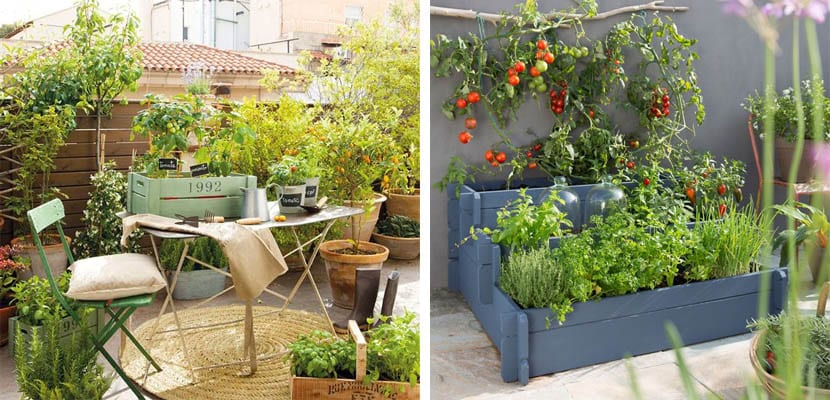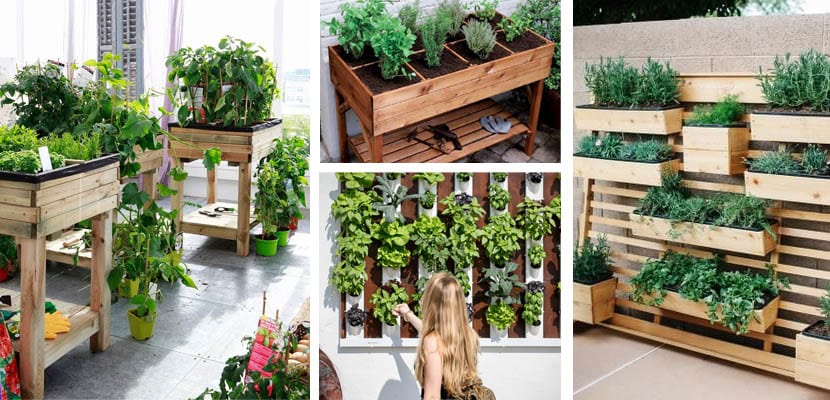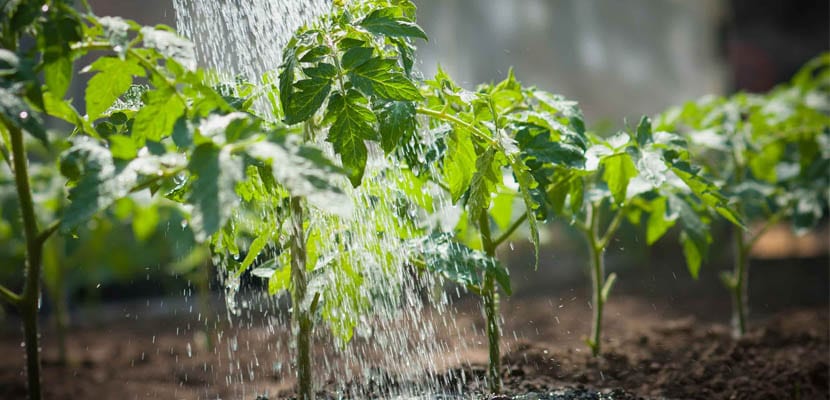
Have you considered installing a garden on your terrace? Less than 1m2 It is the space you need to grow lettuce, carrots, peppers or aromatics on your own terrace. If you have a space of these dimensions that receives enough hours of sun, congratulations! You can create your own garden on the terrace.
What do I need to start growing my own vegetables? Is it necessary to invest in a grow table? If you have considered creating a garden you have probably asked yourself these questions. Today we try to give you answers to these and other questions so that create a garden on your terrace it becomes a rewarding experience.
Step by step to create an urban garden
No experience is necessary to create an urban garden. Neither is it that your terrace has certain minimum dimensions. What is important is to observe the space to know when and for how long it receives sun and to know the different types of containers in which you can grow your plants.
1. Know your terrace
The pots of peppers, tomatoes and beans enjoy the sun a lot, requiring at least 6 hours of direct light. Others such as lettuces, carrots or aromatic ones, on the other hand, can develop optimally with 4 hours of direct light. Each plant requires light conditions determined, that is why it is important that you observe these dynamics on your terrace.
Know the orientation of the terrace and the hours of sunshine in each of its areas, as well as being aware of the shadow generated by buildings, trees, etc. it will allow you to play with an advantage. Write down your observations for a few days; Only then will you be able to decide where to place those crops that are more demanding in terms of daylight hours or those that seek some shade.
2. Choose the right containers
Grow tables, planters, pots or vertical gardens? There is no single "ideal" container to grow your plants, your choice will depend on both the space you have on your terrace and the investment you are willing to make.
- Pots and planters. Pots are an ideal choice for beginners and small spaces. They are very flexible; You can group them in different ways for your benefit and increase their number when you want to increase the size of your garden. However, it is important to know how to choose the right pot size for each crop. Tomatoes, peppers and aubergines, for example, require a minimum pot volume of 16 liters. Carrots, radishes and garlic, on the other hand, need only 0,6 liters to develop properly so grouping several in a planter is a great option.
- Textile pots. They are very light and easy to transport from one place to another in search of the most appropriate place thanks to their handles. They are generally made of a geotextile material that is permeable to water and resistant to weathering and ultraviolet rays. They provide excellent drainage and promote very healthy root development. What's more can be washed and stored when not in use, a very practical feature given the seasonality of the crops. Are they all advantages? Its aesthetics is probably the weakest point, although it is true that its design has improved and that it can always be covered with trims in other materials.
- Grow tables. The raised grow tables are very comfortable surfaces because they allow us to work the land without stooping, however, they require a significant investment. You will find them made of different materials, being those of wood treated in an autoclave to withstand adverse weather conditions the most interesting. They do not have much depth, so they are only suitable for growing species that do not grow in height, such as leafy vegetables, peppers, aubergines and aromatic, among others.
- Vertical gardens. If space is an issue, vertical gardens are a great choice. They are very popular modular self-supporting systems and self-draining polypropylene with great resistance to the elements. In addition to these you will find vertical gardens on the market made of a felt that prevents the development of bacteria and fungi and solutions made at home with pallets. In them you can grow small aromatic plants, strawberries, and even small vegetables such as lettuce.
3. Prepare the containers and choose your first plants
The most beautiful part for every beginner is the moment of choosing the plants. Lettuces, tomatoes, peppers, strawberries, parsley and other aromatics are relatively easy to grow and the most appropriate for beginners, although we will talk more about this in a few weeks. However, once the containers are placed on the terrace and to be able to start cultivating your first plants before you must….
- Provide the pot or grow table with a good drainage, placing a layer of one or two centimeters of gravel at the bottom of the container to avoid waterlogging in case of overwatering.
- Fill, leaving two fingers to the edge of the support, with a special substrate for orchard, ensuring that it is loose and without lumps. These substrates are generally composed of a mixture of coconut fiber, blond peat, black peat, composted plant material, organic matter and perlite.
4. Install an irrigation system
A watering can or a hose are a good solution to get started and are also practical in small gardens. But what happens if we go on vacation? Or if the garden grows too big? Then it is advisable to resort to self-watering systems or bet on more complex systems such as drip irrigation that will give us greater autonomy.
Self-watering systems work like reservoirs; you can place them in the pots in the hottest seasons to complement manual watering. Systems drip irrigation They are more complex and will allow you to regulate the frequency and intensity of irrigation automatically. Do you want to know in greater depth the different irrigation systems and know how to install them in your garden? In two weeks, we promise to expand the information. Be aware!
Have you found these keys useful to create a garden on your terrace?





